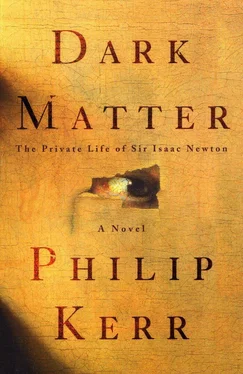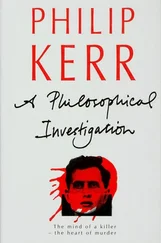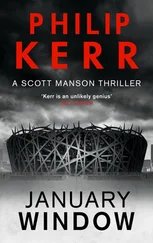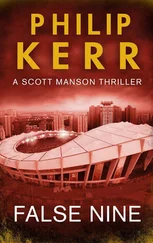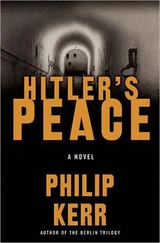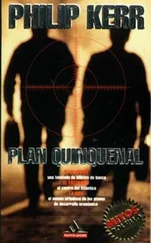Such as a man’s death, for example.
Major Mornay’s body was discovered hanging in the Mint that same evening. I say “in the Mint” advisedly, for the circumstance of his death provoked yet another bitter argument between my master and Lord Lucas. Mornay was found hanged, having apparently tied a rope around a crenellation atop the Broad Arrow Tower, so that when he threw himself off the battlement his feet almost touched the ground in the Mint Comptroller’s garden; and indeed it was the wife of one of the Mint Comptrollers, Mrs. Molyneux, who found the Major’s body.
Newton was summoned straightaway by Mister Molyneux, who then returned to his house to comfort his poor wife, who was most upset by her discovery. My master was still contemplating the body as might an artist who proposed to sketch the scene for a painting of Judas Iscariot, when Lord Lucas and some other members of the Ordnance arrived on top of the Broad Arrow Tower and, declaring that the Major’s death was properly a matter for the Ordnance — for it was given out immediately that it was Mornay who was dead — they sought to draw the rope still bearing him by the neck, back up the wall of the inner rampire. Which made Newton much aggrieved, and producing the ivory-handled table knife that he sometimes carried about his person, he cut through the rope so that the body fell into the Comptroller’s rhubarb, which, although medicinal, had not the power to revive the poor Major from his lethal condition.
Seeing himself cheated of the jurisdiction — for as Newton reminded His Lordship, possession is nine points of the Law — Lucas’s noble face took on an apoplectiform look and he thundered all sorts of revenges he would take on Newton when next he saw the Lords Justices, which Newton ignored as one who did not hear these threats at all. Instead he gave even closer inspection to the rope around Mornay’s neck than the Major’s previously elevated position had allowed.
“This is too bad,” he sighed. “The poor fellow.”
I had not liked the Major — he had tried to gouge me with his dagger, after all — but I, too, pitied him now as I pity all who murder themselves, for the Law makes suicide a most uncomfortable grave. And I murmured something in Newton’s earshot to that effect.
“I have attended a sufficient number of executions within the course of my duty to know how a man’s neck is affected by hanging,” said Newton. “I have observed that the neck breaks but rarely, and most often that death be occasioned by simple strangulation. The lungs are deprived of air; but just as importantly, if William Harvey’s book is to be believed, the brain is most mercifully deprived of blood.
“When a man is cut down before disembowelling, the rope hardly has time to draw tight, as occurs with a normal hanging. And yet I have noted how the geometry of his punishment always leaves its mark upon his neck, so that it may be observed how a man who slowly strangled upon the rope may be distinguished from one who hardly dangled at all.
“The level of tightening of the ligature in a hanging is always much higher than in strangulation and less likely to encircle the neck horizontally. Commonly it may be observed around the larynx in the front rising to a suspension point at the knot with its characteristic open angle behind or under the ear on one or t’other side, or at the back of the head. This means that with most hangings the impression caused by the noose will naturally be deepest opposite the suspension point.
“And yet here observe if you will,” he told me, “that the neck bears the fine impression of the rope in two different places.”
I looked at Mornay’s neck as Newton had instructed, trying to ignore the turgid tongue that protruded from his mouth like a third lip, and his eyes, which were as horribly prominent as a couple of weeping chancres, and thus I saw, as he proposed, not one but two rope marks upon the Major’s broken neck.
“What does this mean?” I enquired uncertainly. “That the rope slipped when he threw himself off the Tower?”
“No,” Newton said firmly. “That he was strangled before he was thrown off the Tower. And since strangulation is rarely suicidal, we must conclude that he was murdered.”
“Must we?”
“Yes indeed,” he insisted. “The first mark which identifies the strangulation shows even on the back of the neck where the skin is thick and the tissues are tough, and could only have been made by extreme violence and, as its corollary, a most desperate resistance. Moreover this mark is horizontal as would denote someone attacking the Major from behind.
“Now contrast the second mark, which is much more vertical and shows almost no resistant damage. This suggests that the man was dead when it was made.”
All of which made me think that Newton knew as much about how a man might hang as Jack Ketch himself, so that his arguments seemed to be quite without answer, except to say that I could utter no objection to his findings. And, as ever, I was astonished how much he seemed to know about nearly everything. But perhaps it was only fitting that the man who explained gravity should be so well informed — even, it must be said, animated — on the subject of hanging; and since then I have often considered the possibility that he was morbidly fascinated by the gallows. For my own part I find hanging a very unpleasant sight, and said as much to Newton.
“All the doctors I have talked with,” said he, “inform me that there is no pain at all in hanging, for it stops the blood’s circulation to the brain and so ends all sense in an instant.”
“I have yet to see the man turned off a ladder who bears his experience with a smile on his face.”
“What?” exclaimed Newton, and leaving off his examination of the Major’s neck, he set about an inspection of his hands, as if, like some ancient chiromancer, he might divine the origins of the poor man’s fate. “You think that we should let rogues walk free who also deserve to hang?”
“I think that there is much difference between a flash ballad and a capital crime.”
“Oh, you would have made a fine barrister,” teased Newton. And then, holding up one of Mornay’s hands, he asked me to note the fingers. “Look at his fingernails,” he said. “Torn and bloody. As if he struggled against the rope. A real suicide would meet the means of his own end with greater equanimity. It may be that the Major’s murderer bears the scars of his crime. Perhaps some scratches on his hands and face.”
Newton prised open the dead man’s jaws and, pushing aside his tongue, searched his mouth. But finding nothing, he began to search the dead man’s pockets.
“I regret that I did not foresee this circumstance,” admitted Newton. “This is my fault. I confess I did not think they would kill their own confederate. My own consolation is that by proving this is murder and not suicide, I shall save him from a dishonourable burial. But am I mistaken or did he not try and kill you last night? Why should you be sorry for him?”
“I am sorry for anyone who meets such a fate as this,” said I.
Newton paused. “Ah, but what have we here?” His long lean hands produced a letter which he unfolded.
“Now we have something,” he said, mighty pleased at this new discovery. “For this is written in the same code as those other messages before.”
He showed me the letter, which appeared thus:

“Excellent,” he said, pocketing the letter upon my returning it to him. “Our material is accumulating. Now, at last, we may make some progress in this case.”
“With three people murdered, let us hope so.”
Читать дальше
